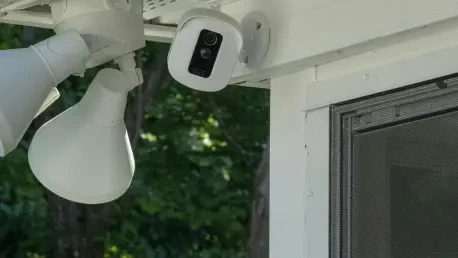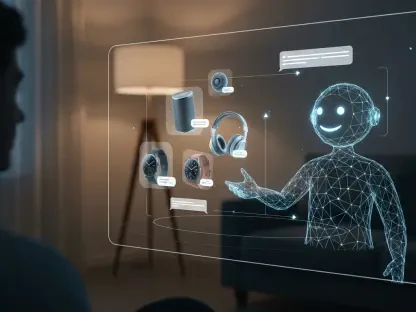The advancing landscape of technology in 2025 brings revolutionary changes to smart homes, transforming how people interact with their environments. As countless new devices integrate seamlessly into daily life, safeguarding personal information becomes a paramount concern. Smart home privacy is not just a matter of convenience; it is a necessary measure to ward off potential intrusions and breaches. Consumers across the globe face the challenge of securing their networks and data while enjoying the benefits that connected devices offer. Establishing security measures is possible through understanding best practices, including network protection, device authentication, and data minimization. The importance of bolstering Wi-Fi security, regularly updating firmware, selecting brands with robust security protocols, and educating oneself about privacy threats cannot be overstated. Delve into this comprehensive guide to enhance your smart home’s security and maintain privacy.
1. Enhancing Your Wi-Fi Network Protection
A secure Wi-Fi network forms the backbone of smart home privacy, providing essential protection against unauthorized access and data breaches. Start by utilizing encryption methods like WPA3 or, when not available, WPA2 to fortify your wireless network against cyber threats. Dismissing obsolete protocols such as WEP helps ensure security. Keep router firmware up-to-date to maintain strong encryption standards, and replace outdated equipment if necessary to bolster safety. Develop a complex, distinct password by mixing numbers, letters, and symbols and changing the default SSID to a name that lacks identity clues. This step prevents targeted attacks and unauthorized entries.
Further safeguarding your Wi-Fi network involves implementing MAC address filtering to restrict access exclusively to verified devices. Create guest networks limited to internet access, which serves to compartmentalize the network and minimize intrusion risks. Disabling SSID broadcasting might be necessary in specific cases to obscure your network’s presence. These practical measures efficiently enhance network security by limiting interference and unauthorized access attempts. Regularly conducting audits of your connected devices allows identification and elimination of unfamiliar entities, maintaining control over your system’s integrity.
2. Maintaining Smart Device Firmware with Regular Updates
The continuous updating of smart device firmware plays a crucial role in preserving your home’s security. Firmware updates are designed to patch vulnerabilities and prevent exploitation by cybercriminals. By fixing security flaws, they improve encryption, authentication, and intrusion detection, securing devices against unauthorized interactions. Automated updates should be enabled to ensure timely installations, scheduled during off-peak periods to avoid interruptions. Validation through cryptographic verification confirms their legitimacy and maintains network stability.
Failing to implement regular updates exposes devices to potential breaches, leaving them susceptible to malware, ransomware, and botnet attacks. Skipping critical patches compromises overall network safety, jeopardizing household data and operations. Regular update checks ensure that your devices comply with evolving security standards, keeping them compatible and operationally sound. Monitoring device logs and activity helps identify emerging threats, enabling prompt responses. Understanding building codes and safety requirements also contributes to maintaining a secure, compliant connected home environment.
3. Choosing Dependable Brands with Strong Security Protocols
Selecting smart home devices from manufacturers who exhibit a commitment to security is imperative for privacy protection. Focus on companies with consistent transparency in handling security issues and revealing vulnerabilities. Companies that have undergone independent security assessments and publicly share results often demonstrate their dedication to safeguarding user privacy. Seek brands actively involved in security standards organizations and industry collaborations to ensure they remain aligned with modern threat landscapes.
Additionally, prioritize devices that support open communication standards such as Matter or Zigbee and employ end-to-end encryption to protect data transmission. Secure boot processes, encrypted updates, and mutual authentication reinforce device integrity. Dependable brands should also adhere to privacy principles, minimizing data collection and offering clear policies on data usage, storage, and user control. By incorporating security best practices and promptly applying updates, consumers can enhance their confidence in device reliability while maintaining privacy.
4. Incorporating Two-Factor Authentication for Devices and Accounts
Implementing two-factor authentication (2FA) safeguards smart home accounts from unauthorized access, adding an extra layer to password protection. 2FA is essential, especially with the proliferation of over 35 billion IoT devices globally, preventing potential cascading failures across interconnected systems. Utilize authenticator apps generating temporal codes, biometric systems like fingerprint or facial recognition, or security keys like FIDO2 for heightened account security. Enable multifactor options on both smart home platforms and device-specific settings to strengthen defenses.
Avoid the use of default passwords; instead, opt for creating secure, unique combinations managed through a password manager. Regular firmware updates on devices and authentication apps ensure compatibility with current security protocols. Consider utilizing biometric authentication alongside cookies and privacy settings to limit data sharing and enhance user access control. Combined with ongoing monitoring of network activities, these strategies provide comprehensive protection, reducing vulnerability and maintaining control over device interactions.
5. Implementing Data Minimization and Privacy Configurations
Smart home devices may inadvertently share extensive personal information, making data minimization a vital step in safeguarding privacy. Establishing clear justifications for data collection is crucial, ensuring only essential information is retained. Implement strict guidelines for the duration of data storage, regularly revisiting privacy settings across devices and applications. Disabling non-essential features and opting out of unnecessary data sharing keeps privacy configurations optimal.
Using granular controls permits access restrictions on a per-device or feature basis, empowering users to make informed decisions. Recognizing varying data types and their collection practices guides safe choices in managing privacy settings. Remaining vigilant in assessing security vulnerabilities helps anticipate potential risks and take proactive measures. Being conscious of self-awareness also promotes insights into what information is truly necessary to share. Enforcement of data minimization reduces exposure, facilitating greater control over personal data and ensuring a secure home environment.
6. Securing Physical Entry to Devices and Systems
The physical security of smart devices is a cornerstone of protecting systems against tampering and unauthorized access. Establishing a secure perimeter through fencing, gated entryways, and monitored access points limits intrusion opportunities. The employment of security personnel aids in identity verification and constant monitoring of suspicious activities. Biometric authentication methods—such as fingerprint, facial, or iris recognition—strengthen identity validation significantly beyond traditional methods.
Monitoring incoming vehicles for tampering or unauthorized presence is particularly important, given vulnerabilities in self-driving infrastructures. Automated alert systems should cover access points around the clock, even during off-hours. To deter tampering or theft, mount critical devices in locked enclosures or elevated locations. Staying informed about security protocols further supports the strengthening of defenses, incorporating crochets or alternative protective strategies enhances infrastructure resilience. Deploying these multilayered approaches offers a comprehensive defense against physical threats.
7. Consistent Monitoring of Data Flow and Device Operations
Monitoring data transmission within smart homes ensures ongoing security and identifies potential breaches. By reviewing network traffic, any unusual data patterns suggesting malicious activity are detected early. Device logs offer insights into unauthorized access attempts or suspicious behavior, facilitating prompt action. Utilizing AI-driven security tools equipped with threat detection capabilities can automatically flag anomalies, preventing them from causing harm.
Keeping devices updated with the latest software protects against vulnerabilities while implementing network segmentation isolates sensitive systems, reducing breach impact. Access to accurate, up-to-date information allows users to maintain vigilance and adapt to emerging threats swiftly. Consistent surveillance over data flow and device operations empowers consistent control over security measures, ensuring peace of mind and privacy in a rapidly evolving technological landscape.
8. Informing Users on Privacy Threats Associated with Smart Homes
Increasing awareness of smart home privacy risks empowers users significantly, safeguarding personal data and maintaining device control. Hackers can exploit unsecured data through weak passwords, unencrypted networks, and vulnerabilities in third-party sharing processes. The omission of device name and identifier protections risks revealing household details and certain locations. Sharing data indiscriminately with external parties heightens exposure to targeted advertisements and possible breaches.
Maintaining regular software updates and adopting strong password practices minimize these risks markedly. Understanding privacy protocols, managing application permissions, enabling two-factor authentication, and appreciating data-sharing dynamics facilitate informed decision-making. Access to news updates, educational workshops, and learning resources keeps users updated on evolving threats and preventive strategies, ensuring effective household security practices.
9. Ensuring Adherence to Evolving Data Privacy Legislation
The importance of compliance with data privacy regulations grows as awareness of privacy risks increases among smart home users. New laws in 2025 demand attention to transparency surrounded by data collection processes, principles for privacy-by-design, and user rights. Information regarding data use, sharing, and storage must be disclosed clearly. Providing options for access, correction, deletion, or opt-outs becomes a necessity, along with brewing strong security measures safeguarding user data.
Keeping abreast of state-specific laws and monitoring relevant thresholds helps avoid penalties, while regular privacy assessments confirm adherence. Collaborating with experts ensures accurate navigation through complex legal frameworks, maintaining protection over sensitive information. Awareness of new regulations fosters responsible solutions, ensuring smart home environments comply with legislative demands while respecting users’ digital rights.
10. Fostering Clarity and Ethical Standards in Smart Technology
Promoting transparency and ethical practices are vital for building trust within smart home ecosystems and fortifying privacy. Grasping the types of data collected by devices, the processing methods employed, and storage practices clarifies user perspectives. Consistent revision of privacy policies ensures notification of changes, upholding fairness. Privacy protections embedded from the inception—the principle of Privacy by Design—reduce risks while prioritizing default data protection settings.
Securing encryption and anonymization shields user identities while granting control over data access, correction, or deletion choices. Generating easy opt-out options empowers user autonomy in managing interactions. Teaching best practices and encouraging industry cooperation nurtures secure, transparent environments. Such measures provide greater assurance, confidence, and accountability within smart home implementations.
Conclusion
As we advance towards 2025, implementing rigorous privacy best practices makes enhancing smart home security achievable. In today’s intricately connected world, over 85% of consumers voice concerns about device safety, highlighting the pressing need for vigilant protection. To address these concerns, several key strategies prove essential. Firstly, diligent monitoring of devices ensures timely detection of any vulnerabilities or unauthorized access. Selecting trusted manufacturers further bolsters security by ensuring reliable and well-vetted products.
Robust authentication methods, such as two-factor authentication, add another layer of defense, making it more difficult for hackers to breach devices. Equally important is educating oneself about potential risks and safe practices, which empowers homeowners to make informed decisions concerning their smart home systems. Staying actively engaged with firmware updates and software developments ensures that devices are equipped with the latest security patches.
Additionally, fostering transparent practices, such as clear user agreements and privacy settings, cultivates a foundation of lasting security. As the landscape of transformative technologies continues to evolve, embracing these proactive measures is essential for preserving privacy and sustaining a protected environment in our homes. These strategies not only safeguard personal data but also assure a secure haven amid rapidly advancing technology.









